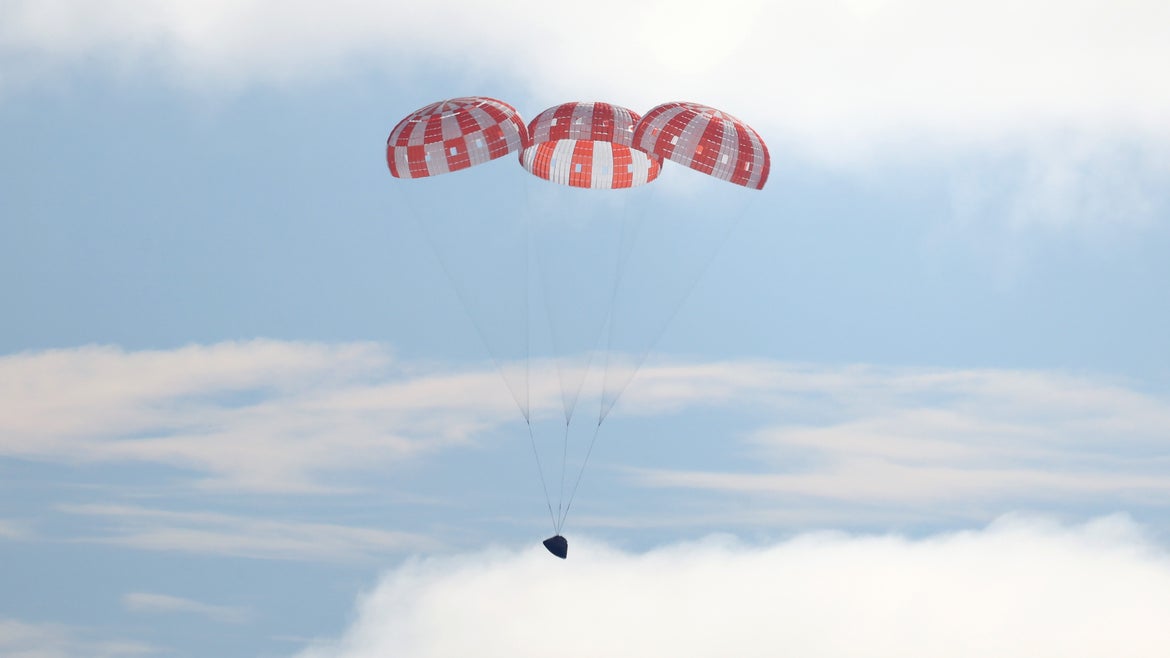After 25 days, NASA’s Artemis I rocket successfully returned to Earth Sunday afternoon.
After 25 days, NASA’s Artemis I capsule successfully returned to Earth Sunday afternoon, hurtling through the atmosphere at more than 25,000 miles per hour and through an inferno of 5,000 degrees.
No humans were on board, but it wasn’t empty — some test dummies equipped to collect data and a Snoopy doll took the trip.
Three parachutes floated the nine-ton Orion capsule into the waters 200 miles off the coast of Baja, California.
A U.S. naval ship, a helicopter and boats were nearby for the landing.
CBS News reports that NASA Administrator Bill Nelson said, "I'm overwhelmed. This is an extraordinary day. It's historic, because we are now going back into deep space with a new generation."
NASA says that during the mission, Orion performed two lunar flybys, coming within 80 miles of the moon’s surface.
At its farthest distance during the mission, Orion traveled nearly 270,000 miles from Earth, more than 1,000 times farther than where the International Space Station orbits Earth. This was done intentionally so as to ensure the system will be ready to handle conditions before it flies a crew.
CNN reports that Orion traveled about 1.3 million miles during this mission, farther than any spacecraft designed to carry humans.
The end of this unmanned test mission coincided with the 50th anniversary of the Apollo 17 moon landing, marking the last time astronauts were there.
RELATED STORIES






